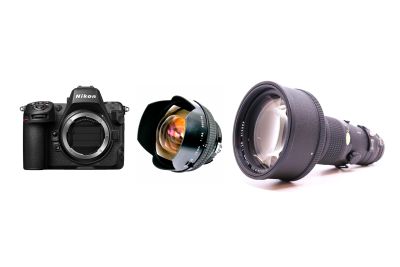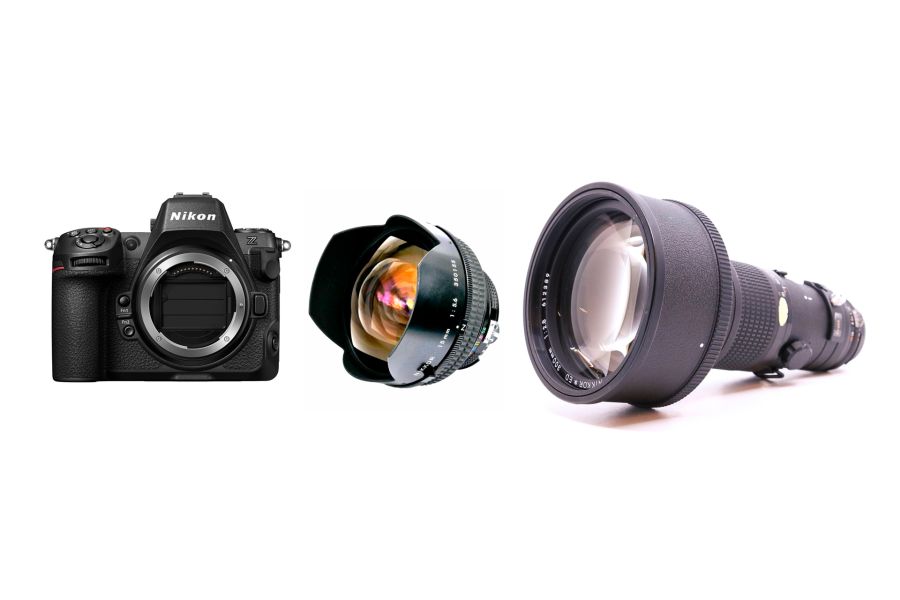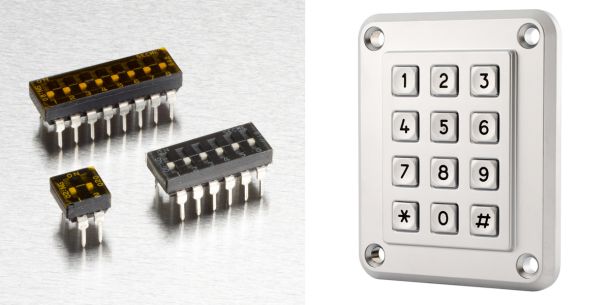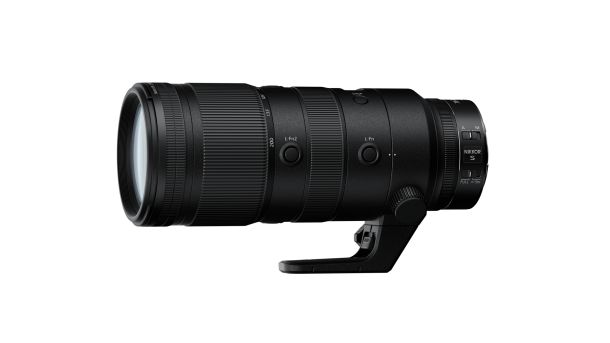

Nikon F Lenses on Z Mirrorless: Compatibility, Optical Design, and Image Quality
Are Nikon F lenses designed for film or DSLR cameras fully compatible with Nikon Z mirrorless bodies?
While the Z mount accepts nearly all F-mount lenses via the FTZ or FTZ II adapter, the image quality achieved on full-frame digital sensors (Zf, Z5, Z6, Z7, Z8, Z9) can vary depending on the lens used.
Why? Because of the way light rays hit the sensor and the physical limitations of modern sensors.
F mount, Z mount: mechanical compatibility, but not always optical
The Nikon F mount has equipped the brand’s SLRs since 1959.
With the Z mount introduced in 2018, Nikon reduced the flange distance to 16 mm (compared to 46.5 mm for F), allowing lenses to be placed closer to the sensor and enabling the creation of new, high-performance optical formulas, especially for wide-angle lenses.
Thanks to the FTZ/FTZ II adapter, many F-mount lenses can be used on Z cameras while retaining autofocus and stabilization (depending on the lens).
But while mechanical compatibility is excellent, the optical performance can greatly depend on how the lens interacts with the digital sensor.
Why digital sensors are more demanding than film
Sensors are made up of flat photosites sensitive to the angle of light incidence.
Unlike film, which can accept light from various angles, digital sensors perform poorly with oblique rays at the edges of the image.
This can result in:
- Vignetting (darkening in the corners)
- Loss of sharpness or contrast at the image edges
- Color shifts (lateral chromatic aberration)
These issues are amplified when the lens has a symmetrical design or a rear element placed close to the sensor—a common feature of vintage wide-angle film lenses.
Which Nikon F lenses are problematic on Z mirrorless cameras?
In practice:
- Telephoto, such as the 500mm f/4 Ai-P and standard primes (50mm, 85mm, etc.) perform very well.
Light rays remain mostly perpendicular, even at the frame edges. - Vintage wide-angles, such as 24mm f/2.8 or some AI-S models, can show vignetting and a lack of edge sharpness, especially wide open.
- Modern G or E-type lenses, designed during the DSLR era, generally perform better but are not always optimized for the shorter flange distance of mirrorless bodies.
A concrete example: I switched from DSLRs (Nikon D610 and D800) to mirrorless with a Z5 using the 24-120mm f/4 lens via the FTZ adapter.
The versatile zoom remained very usable, but it was only after switching to the Z version of the 24-120mm that the improvement became obvious:
sharpness is uniform across the frame, and vignetting is nearly gone—remarkable for such a zoom range.
I also used my Nikon AF-S Zoom-Nikkor 80-200mm f/2.8D IF-ED from 1999 with an FTZ adapter on the Z5, then on the Z7 II, and achieved excellent results.
The design of Z lenses: built for digital constraints
Z-mount native lenses are designed specifically for full-frame digital sensors.
Nikon used the short flange distance to create optics with a rear element placed closer to the sensor, and to better direct the light rays toward the center of each photosite using aspherical elements and special coatings.
The result: greater sharpness, reduced vignetting, and fewer chromatic aberrations.
For instance, after using a 35mm f/1.4 Ai-S in the late 1980s and several manual or AF 50mm F-mount versions, switching to the Nikkor Z 35mm f/1.8 S marked a real step forward.
With F-mount lenses, stopping down a bit was often necessary to regain sharpness; wide apertures were mainly for photojournalists willing to trade sharpness for capturing the moment.
By contrast, the Z 35mm is incredibly sharp wide open—even at the edges, as illustrated in this article on composition and depth of field.
Should you stop using F lenses on Z cameras?
Not necessarily.
For many focal lengths—especially 50mm, 85mm, and telephotos—performance remains excellent.
However, for landscape or architectural photography, where edge-to-edge sharpness is essential, Nikon Z lenses clearly have the edge.
That said, vintage F lenses can still offer a unique rendering or desirable aesthetic.
You just need to be aware of their limitations on digital sensors.
Some technical flaws can even become creative assets.
One example: the very first Nikon zoom, the 43-86mm non-Ai, often criticized for strong flare when shooting into the light.
After reading Ken Rockwell’s article about it, I bought this lens specifically for that effect.
These "imperfections" are now appreciated by Gen Z photographers, as a reaction to the sterile perfection of smartphone-generated images.
Conclusion
The shift from DSLRs to Nikon Z mirrorless opened new optical possibilities—but also highlighted the limits of certain older lens designs.
Nikon F lenses remain a treasure trove for photographers, but pairing them with modern sensors requires informed judgment.
Adapt them, yes—but knowingly.
Want the full picture? See my Nikon Z kit list and related technical articles for real-world pairings and field notes.
FAQ — Nikon F Lenses on Nikon Z Mirrorless
- Are Nikon F lenses fully compatible with Nikon Z bodies?
Yes via the FTZ/FTZ II adapters for the vast majority of F-mount lenses. However, image quality can vary by design: some older wide-angles show vignetting and soft borders. - Why can an F-mount lens lose edge sharpness on a Z body?
Image sensors dislike highly oblique light at the frame edges. Symmetrical designs or rear elements placed close to the sensor can increase vignetting, contrast loss and lateral color fringing. - Which F-mount lenses behave best on Z?
Normal and telephoto primes (50, 85, 105, 180, 200, 300 mm…) and most modern G/E lenses designed in the digital era. - Which F-mount lenses show the most limitations?
Many vintage wide-angles (e.g., classic 24 mm designs) at wide apertures: soft corners, visible vignetting and sometimes color shift. - Do AF, metering and stabilization work through the FTZ?
AF and metering work with AF-S/AF-P/G/E. AF-D (body-motor) lenses are manual focus only on Z. Lens VR works and can combine with IBIS depending on the combo. - Should I prefer a native Z version of an equivalent F zoom?
Often yes for landscape/architecture: better edge-to-edge consistency, built-in corrections, and improved flare/vignetting control (e.g., F 24-120 vs Z 24-120). - Do F-mount lenses still have creative value?
Absolutely: distinctive rendering, flare character, specific bokeh. They’re great if you embrace their technical limits on modern sensors. - How can I optimize an F-mount lens on a Z body?
Stop down 1–2 stops, enable profile corrections, keep the setup square, check film-plane/subject flatness, and adapt technique to the subject.
About the Author
Sebastien Desnoulez is a professional photographer specializing in architecture, landscape and travel photography. Trained in photography since the 1980s, he covered Formula 1 races and reported from around the globe before devoting himself to a more demanding fine art photography practice blending composition, light, and emotion. He shares his technical expertise through hands-on articles for passionate photographers, built on a solid background in film and digital photography.
Tags
I am represented by the gallery
Une image pour rêver


